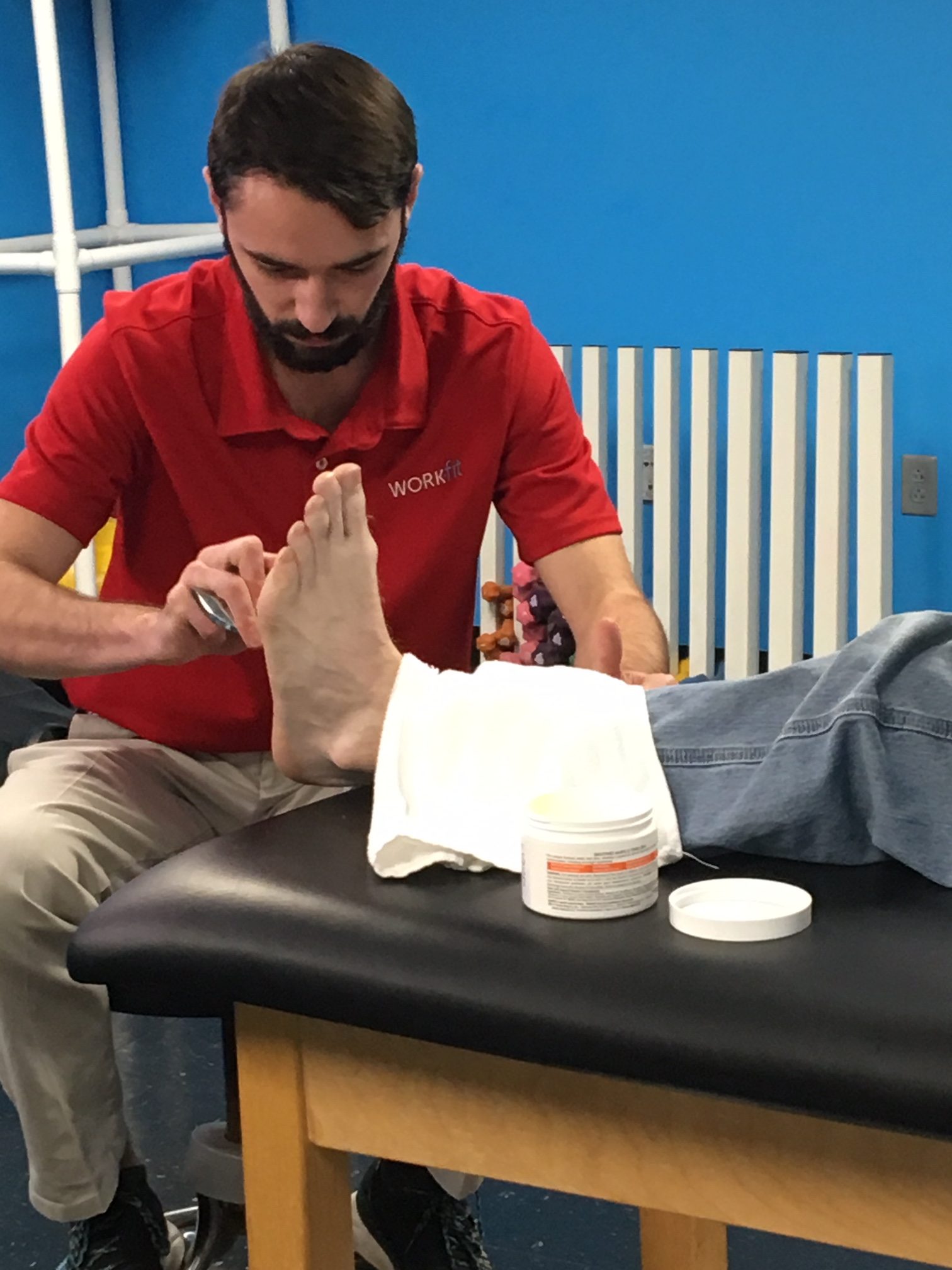What Is A Certified Athletic Trainer?

When most of us hear the words “certified athletic trainer,” we probably think about individuals who work with professional athletes, Olympic gold medalists, and other competitors in the worlds of strength, endurance, and athletic competitions. Though many certified athletic trainers certainly do work with elite athletes, others share their skills in a “non-traditional” setting.
Many certified athletic trainers work within the occupational world, offering a variety of programs that help business owners, HR professionals, and other managers keep their workforce healthy and working at full capacity. Certified athletic trainers can help your company improve company productivity levels, reduce health care expenditures, and limit workers’ compensation and insurance costs.
In this short article, we explain what a certified athletic trainer does. We also explain what training is required to become a certified athletic trainer, and how a certified athletic trainer can help create a thriving company culture.
What is a Certified Athletic Trainer?
Certified athletic trainers are highly qualified and motivated health care providers. Whereas many medical professionals are trained in narrow specialties, athletic trainers receive a comprehensive and holistic preparation. They are trained to not only deal with injuries of athletes (as their name implies), but they also specialize in preventing, diagnosing, and treating muscle and bone injuries and illnesses.
Many athletic trainers work within educational settings, working with high schools and universities. Hospitals, fitness centers, physicians’ offices, and professional sports teams also hire certified athletic trainers for their services.
In more recent years, however, certified athletic trainers are finding another opportunity for employment with a variety of industries and businesses. Many companies around the country are increasing their focus on holistic wellness for their employees. Given this motivation, certified athletic trainers can help a company achieve its health, safety and profitability goals.
Musculoskeletal disorders (MSD) are one of the leading causes of workplace injuries, and are responsible for almost 30 percent of all workers’ compensation costs, according to the Bureau of Labor Statistics (BLS). From office workers who spend hours hunched over a computer to warehouse employees who spend their days lifting heavy loads, certified athletic trainers can help businesses and their employees prevent MSD-related injuries while also developing techniques to help people who are already experiencing diverse musculoskeletal disorders.
Certified Athletic Trainer Requirements
So what are the requirements to become a certified athletic trainer? According to the United States Bureau of Labor Statistics, “athletic trainers need at least a bachelor’s degree. Nearly all states require athletic trainers to have a license or certification; requirements vary by state.” Athletic trainers must have graduated from a program that is accredited by the Commission on Accreditation of Athletic Training Education (CAATE). These programs are now phasing into all Master’s level programs. Following program completion,
a comprehensive test administered by the Board of Certification (BOC) must be passed to become nationally certified. Many states also require licensure to practice. Additionally, ongoing continuing education requirements are required in order to remain certified.
As interest in holistic employee wellness continues to grow across industries, the employment of athletic trainers is projected to grow 23 percent from 2020 to 2030, much faster than the average for all occupations.
What Does a Certified Athletic Trainer Do?

For all types of businesses, athletic trainers can help improve employee health and wellness in several different ways, including:
- Injury prevention.
Certified athletic trainers help employees identify possible stressors that could lead to MSDs. They offer biomechanics coaching and provide techniques and strategies to reduce musculoskeletal fatigue. Athletic trainers also offer insight into the best ergonomic workplace setups to avoid injuries. - Improved recovery times.
Athletic trainers can provide onsite first aid care and rehabilitation of injuries. This helps prevent escalation of or speeds up recovery from injuries. This can help reduce the amount of time spent away from work. - Employee Wellness.
Certified athletic trainers provide holistic health education on topics like nutrition, sleep, hydration, cardiovascular fitness, etc. They can also help businesses design and implement holistic wellness programs for their employees. These programs are fundamental in helping companies increase their productivity, employee retention rates, and improve overall company culture. - Access to Care.
Lastly, just like in sports, occupational athletic trainers are embedded with the team. They are fully integrated in the business process and know the physical demands of the workforce. Employees have access to advanced prevention and care that is delivered onsite. Quick, integrated service means fewer recordable injuries and lost work days for companies.
Keep Your Team Working Fit With Work-Fit
If you are a company looking to improve employee wellness, you might consider hiring a certified athletic trainer. Work-Fit is a leading onsite injury prevention and management program for your workforce. Our wellness management program, injury prevention program, and injury management program are great resources! We’ll help your company increase your productivity and profitability levels while creating a happy, engaged, and healthy workforce.
Contact Work-Fit today to see how our certified athletic trainers can help your company grow!